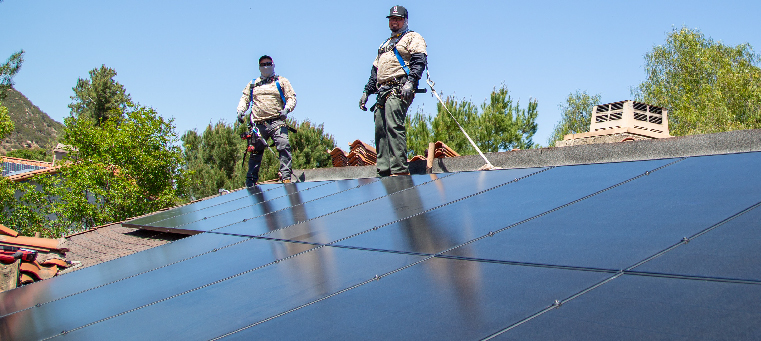




The White House has long served as a symbol of America, and our nation’s Presidents have been careful in how they choose to decorate and present this historic monument. Not only do the President and his staff live there, but the media also often has its eye on this important place.
For these symbolic reasons, as well as a few practical ones, several Presidents throughout the years have chosen to install or uninstall solar panels on the White House roof—and by doing so, to make statements about how this powerful symbol should get its power.
Jimmy Carter
Jimmy (James) Carter, the 39th President of the United States, was the first President to install solar panels on the White House, and he used them to heat the water for the staff kitchen. Former President Carter’s decision was certainly a symbolic one, as the solar panels were installed during the 1979 oil crisis. He shared that this move was intentional, and in a formal declaration he stated that his goal for solar energy was, “…harnessing the power of the sun to enrich our lives as we move away from our crippling dependence on foreign oil.”
Ronald Reagan
The president directly after Jimmy Carter, former President Ronald Reagan, did not necessarily share Carter’s views on renewable energy. According to Scientific American, Reagan decided to remove the panels when the White House roof was resurfaced, and not to put them back up. Some of the reasons were practical, according to Reagan, who believed it was not cost-effective to keep the panels up. However, some reasons were symbolic, as this was around the same time that Reagan withdrew support for renewable energy tax credits and the Department of Energy. Carter’s panels have since been moved to Unity College in Maine, the Smithsonian Museum, the Carter Library, and the Solar Science and Technology Museum in China.
George W. Bush
Perhaps surprisingly, the next president to reinstall solar panels on the White House was former 43rd President George W. Bush. The administration installed a nine-kilowatt photovoltaic system to produce electricity, and two solar water heaters. Unlike Carter, Bush did not issue an official declaration or state any symbolic reasons for the switch. Instead, it simply seemed like a practical decision: solar technology had now advanced, and the solar panel price had dropped far enough, that it was now more cost effective for the White House to receive some energy from solar power.
Barack Obama
American’s 44th President, former President Barack Obama, reinstalled solar panels at a larger scale—and with more publicity—than anyone had since Carter.
“Solar panels on the White House, I think, are a really important message that solar is here, we are doing it, and we can do a lot more,” said Dr. Ernest Moniz, former Secretary of Energy for the Obama administration. Installing solar panels on the White House was a purposeful choice for Obama, who was known for his pro-renewable energy policies.
The panels installed on the White House were around the same size as panels installed on the average American home. Minh Le, Director of Solar Tech at the Department of Energy, shared, “The President is basically doing what Americans all across the nation are doing right now. They’re making the conscious choice to look for renewable energy like solar as the cheaper, cleaner, and preferred energy source for their homes and families.”
Interested in installing solar panels on your own home? Get a free energy analysis from local and veteran owned Semper Solaris.